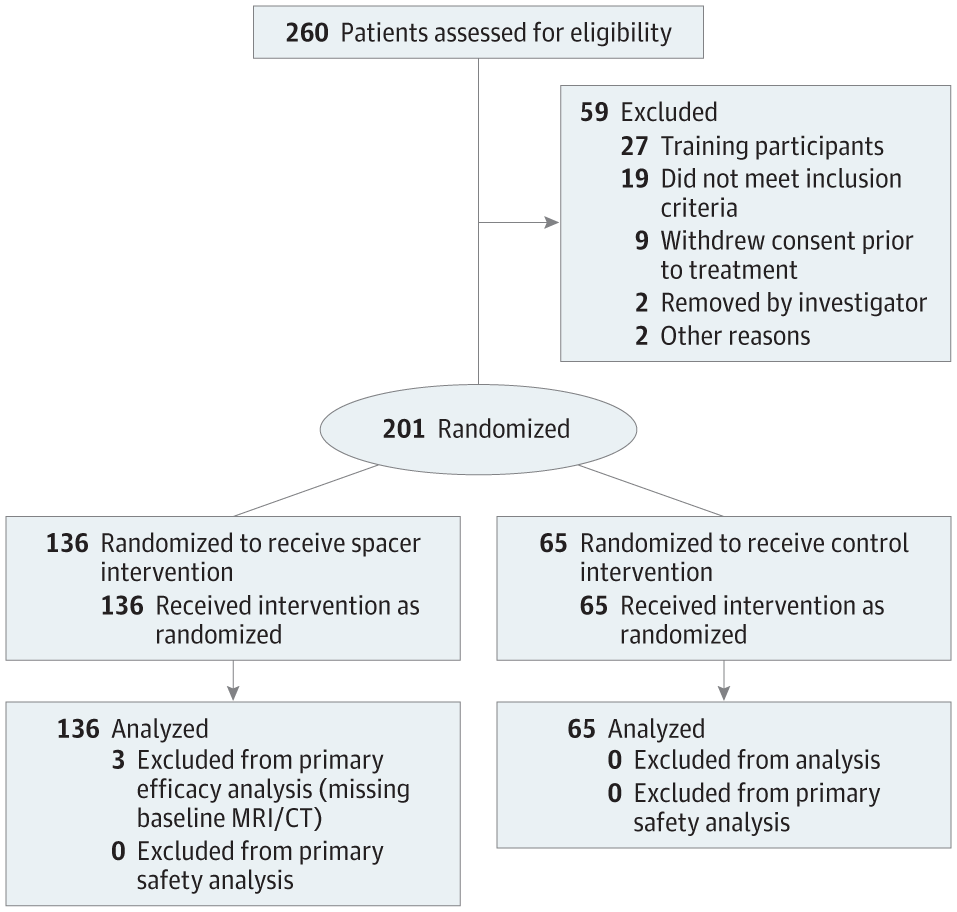I don't get the reaction to spacer placement on this board. We do SpaceOAR in our practice, it goes well, and our guys seem to do very well with hypofrac or SBRT. It's not for money (it reimburses very little), it just seems like the right thing to do. It makes logical sense that increased distance = lower rectal dose = lower toxicity. As a secondary benefit, you can also push harder on the bladder to lower the dose there as well. Are there data suggesting inferior outcomes with SpaceOAR or what am I missing here??
1) "Our guys seem to do very well with hypofrac or SBRT"
Ok...compared to what? I virtually never use the gel and my patients also do very well. There were many years after the widespread adoption of CBCT/VMAT but before SpaceOAR where I'm pretty sure literally millions of guys were cured of prostate cancer without alarming toxicity.
2) "It's not for the money"
While the doctor pockets very little, the cost to the patient is significantly higher. This is hidden very well in academia, which is unfortunate, given many of us are first exposed to the gel in residency. If the procedure is not covered by the patient's insurance, they're on the hook for $4,000-$6,000. There is often a second MRI to verify placement, which can also range into the thousands of dollars for out-of-pocket expenses. SpaceOAR/Barrigel is hands-down one of the most financially toxic things we inflict on patients.
3) "It makes logical sense..."
Well, as this paper itself literally shows...this defies logic, then, as the lower rectal dose
DOES NOT TRANSLATE TO LOWER PATIENT-REPORTED TOXICITY.
4) "Are there data suggesting inferior outcomes"
Well, considering almost every paper ever published about SpaceOAR or Barrigel has COI, with either personal fees, ownership interest, or research funding...it almost appears as if Augmenix, Boston Scientific, and Palette Life Sciences have managed to get into the pockets of every American RadOnc who would have the resources and motivation to conduct such a study. Weird, right?
Think of how many RadOncs have either trained under, or have their paychecks affected by, people like Peter Orio (Vice Chair of Network Operations, Brigham), Michael Zelefsky (Endowed Vice Chair, Sloan), and Paul Nguyen (GU Director and Vice Chair, Dana-Farber).
From OpenPayments:
Almost $3 million dollars paid out before being bought by Boston Scientific. And now we have Palette in the game!
5) "What am I missing here?"
Using the gel:
- is a procedure that "solves" a problem which didn't exist in the first place
- puts the patient at risk of adverse reaction to the medications used during the procedure
- puts the patient at risk of injury, infection, and bleeding
- puts the patient at risk of experiencing significant financial toxicity
- puts the patient at risk by inducing complications which prohibit completing definitive therapy
- puts the patient at risk of permanent complications
- contributes to the erosion of public trust by engaging in practice patterns influenced by millions of dollars in industry payments
This really seems like the right thing to do?





